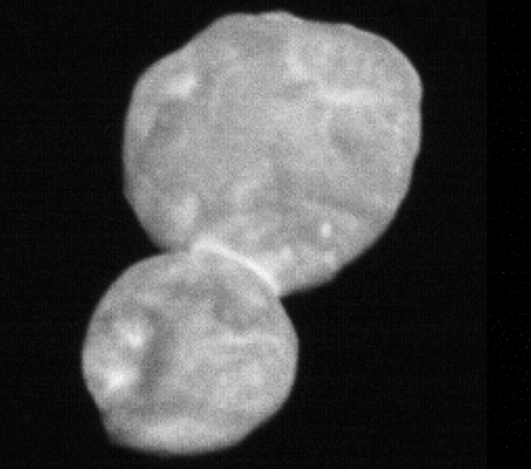It’s the first week of January, 2019, and it’s crowded with planetary exploration news. First and closest to home, meet Yutu 2.

A day after its January 2 touchdown, the China National Space Administration rover Yutu 2 rolled off its lander on the far side of the moon. China first successfully visited the moon in 2013, and this latest triumph is a continuation of their ongoing lunar exploration program. Yutu-2’s mission is mostly about geology, examining the soils and subsurface chemistry of the anti-earth half of the moon, but it also carries a biology experiment to see how silkworms and several plant species grow in the 1/6 gravitational field and 4 week day/night cycle of the moon.
Next, NASA’s OSIRIS-REx has achieved orbit around asteroid Bennu.

Cute li’l rock, yes? (The second panel is a geological false color map) Bennu is the smallest asteroid yet to be visited by a spacecraft. It’s not a main-belt asteroid; it’s in the Apollo family of asteroids. That means its orbit crosses earth’s and it’s potentially dangerous in terms of maybe eventually hitting the earth.
This amazing OSIRIS-REx mission will attempt to return a sample of Bennu to earth in 2020. In the meantime, we get excellent pictures and other sensor data. Early science results are just now coming in. For example, by watching the orbit of the spacecraft, we have a mass estimate and a density estimate of 1190 kg per cubic meter (water is 1000). This implies pore space inside the mainly rocky body. Excitingly, Bennu has small amounts of solid water in it.
Farther out, 4 billion miles, give or take, is the object known as Ultima Thule (2014 MU-69).

The New Horizons Pluto flyby mission performed a course correction to take it by this small KBO (Kuiper Belt Object). It flashed by on Jan 1. The full array of pictures and other data will take months to get transmitted (see the 4 billion miles number, above), but we have this snapshot.

Ultima Thule is about 20 miles long, composed of two unequal icy spheres about 12 and 9 miles in diameter, respectively. It is the first known “contact binary” small body in the solar system. The idea is that two separately-formed spherical bodies orbited each other, slowly getting closer and closer until they mashed together. Ultima Thule is truly primordial, unchanged since the formation epoch 4.5 billion years ago.
New Horizons has already visited amazing Pluto (pictured below) and its 5 moons.

Hats off to China’s and the USA’s space agencies! What a week!
Amazing photos! I was following the story about Ultima Thule on the news this past week.
LikeLiked by 1 person